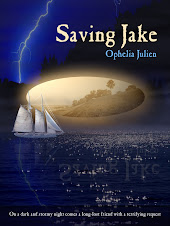Sometimes when I’m
trying to get a story going, I’ll pick an object that in itself is not scary,
but for some reason is a good jumping point for a scary tale. A mirror is a
good example. So is a window, a doll, or a gravestone. On a slightly lesser
scale but also good for potential goosebumps is a door, or a candle.
Those are things that
can be seen and touched. Then there are the things that can be heard:
footsteps, a creaky door, a growl, a scream. All of these can also be good for
generating a chill or two.
But sometimes, even
using something from my “A list” —take a doll, for instance— I can’t find the
scare to write about. Okay, Ophelia,
I say to myself. What can be scary about
a doll? Well, perhaps it can move: open and close its eyes, turn its head,
change its pleasant plastic expression to something nasty and malevolent. Or
maybe it can really move, like jump off the shelf and walk over to me. YIKES.
That is a terrifying thought. But terrifying as it can be, that’s still not a
story. It’s just a thought.
Trying to put that
thought into context, into an actual tale, can be both tricky and frustrating.
I’ve had occasion to be working on stories about various disturbing items, but
my brain is tired and lately, after finishing a story, I’ll look at it and
think—well, I’ll be polite here and not include what I actually think. But it
can be very discouraging.
If one thinks about
dolls and scary stories, one begins to realize that there isn’t much that hasn’t
already been done. Chucky and Annabelle come readily to mind. Then there’s the
clown doll in Poltergeist. Some of you reading this will no doubt remember
Chatty Kathy from The Twilight Zone, who for my generation, is probably the
mother of all scary dolls. Even the X Files covered this with an episode
written by none other than Stephen King himself.
Mirrors are terrifying
because everyone who has any kind of affinity for the paranormal is convinced
that sooner or later, they will look into a mirror and see someone else looking
back at them, whether a reflection of someone looking over their shoulder, or perhaps
a face in the mirror itself. And there’s the whole Bloody Mary urban legend
thing, as well. It didn’t help that Victorian people insisted on covering all
the mirrors when someone died, one explanation being that they didn’t want the
dead person’s spirit to get trapped in the mirror. There’s a cheerful thought.
J.K. Rowling put a nicer spin on the subject by creating the Mirror of Erised,
but even that was still both eerie and at times, in the books, disturbing.
And then there’s
windows. Saki covered that topic in an unusual way with his “The Open Window.”
I love that story. And I think I recently brought up the old book/movie The Sentinel that features a blind
priest sitting at the window. People see all manner of frightening faces
peering at them through windows, whether from the outside looking in or vice
versa.
So I struggle to find
a way to tell a scary story about such everyday objects that hasn’t already
been told, and about a hundred times better than anything I could write myself.
On the other hand, conventional wisdom says that there are only seven (or is
that 36? I can never remember) basic plots possible and that all stories fall
into one of those categories. It boils down to how the tale is told.
When a really good
scare occurs to me, whether about a doll, a window, a door, or maybe a
disembodied scream, I fall in love with the idea and the words appear on my
screen by magic. But sometimes the scare just isn’t there. Then I go find
comfort in someone else’s tales until I find a way to frighten myself anew.






No comments:
Post a Comment